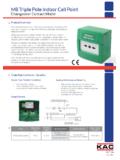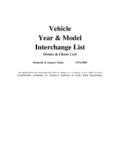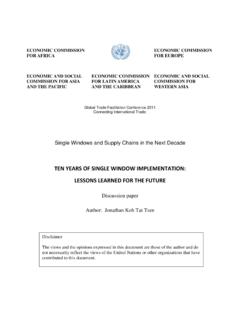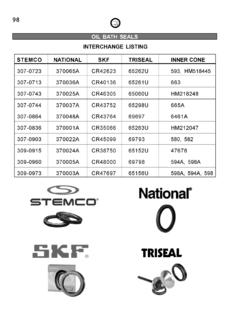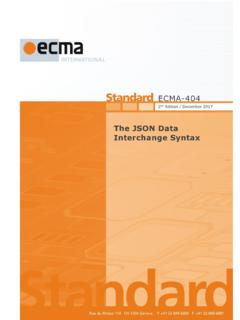Transcription of Data elements and interchange formats — Information ...
1 INTERNATIONAL ISO. STANDARD 8601. Third edition 2004-12-01. Data elements and interchange formats Information interchange . Representation of dates and times l ments de donn es et formats d' change change d' Information Repr sentation de la date et de l'heure Reference number iso 8601 :2004(E). ISO 2004. iso 8601 :2004(E). PDF disclaimer This PDF file may contain embedded typefaces. In accordance with Adobe's licensing policy, this file may be printed or viewed but shall not be edited unless the typefaces which are embedded are licensed to and installed on the computer performing the editing. In downloading this file, parties accept therein the responsibility of not infringing Adobe's licensing policy. The ISO Central Secretariat accepts no liability in this area. Adobe is a trademark of Adobe Systems Incorporated. Details of the software products used to create this PDF file can be found in the General Info relative to the file; the PDF-creation parameters were optimized for printing.
2 Every care has been taken to ensure that the file is suitable for use by ISO member bodies. In the unlikely event that a problem relating to it is found, please inform the Central Secretariat at the address given below. ISO 2004. All rights reserved. Unless otherwise specified, no part of this publication may be reproduced or utilized in any form or by any means, electronic or mechanical, including photocopying and microfilm, without permission in writing from either ISO at the address below or ISO's member body in the country of the requester. ISO copyright office Case postale 56 CH-1211 Geneva 20. Tel. + 41 22 749 01 11. Fax + 41 22 749 09 47. E-mail Web Published in Switzerland ii ISO 2004 All rights reserved iso 8601 :2004(E). Contents Page Foreword .. iv Introduction .. v 1 1. 2 Terms and 1. Basic concepts .. 1. Time units, nominal durations and time intervals .. 4. Representations and formats .. 7. 3 Fundamental 7. Basic rules .. 7.
3 Time scales .. 8. Representations and format representations .. 10. Characters used in the representations .. 10. Expansion .. 12. Leading zeros .. 12. Mutual agreement .. 12. 4 Date and time 13. 13. Time of day .. 15. Date and time of day .. 18. Time interval .. 20. Recurring time interval .. 23. 5 Date and time format representations .. 25. Annex A (informative) Relationship to ISO 2014, ISO 2015, ISO 2711, ISO 3307 and ISO 4031 .. 26. Annex B (informative) Examples of representations .. 27. Bibliography .. 33. ISO 2004 All rights reserved iii iso 8601 :2004(E). Foreword ISO (the International Organization for Standardization) is a worldwide federation of national standards bodies (ISO member bodies). The work of preparing International Standards is normally carried out through ISO. technical committees. Each member body interested in a subject for which a technical committee has been established has the right to be represented on that committee.
4 International organizations, governmental and non-governmental, in liaison with ISO, also take part in the work. ISO collaborates closely with the International Electrotechnical Commission (IEC) on all matters of electrotechnical standardization. International Standards are drafted in accordance with the rules given in the ISO/IEC Directives, Part 2. The main task of technical committees is to prepare International Standards. Draft International Standards adopted by the technical committees are circulated to the member bodies for voting. Publication as an International Standard requires approval by at least 75 % of the member bodies casting a vote. Attention is drawn to the possibility that some of the elements of this document may be the subject of patent rights. ISO shall not be held responsible for identifying any or all such patent rights. iso 8601 was prepared by Technical Committee ISO/TC 154, Processes, data elements and documents in commerce, industry and administration.
5 This third edition cancels and replaces the second edition ( iso 8601 :2000), of which it constitutes a minor revision. iv ISO 2004 All rights reserved iso 8601 :2004(E). Introduction Although ISO Recommendations and Standards in this field have been available since 1971, different forms of numeric representation of dates and times have been in common use in different countries. Where such representations are interchanged across national boundaries misinterpretation of the significance of the numerals can occur, resulting in confusion and other consequential errors or losses. The purpose of this International Standard is to eliminate the risk of misinterpretation and to avoid the confusion and its consequences. This International Standard includes specifications for a numeric representation of Information regarding date and time of day. In addition this International Standard includes specifications for representation of the formats of these numeric representations.
6 In order to achieve similar formats for the representations of calendar dates, ordinal dates, dates identified by week number, time intervals, recurring time intervals, combined date and time of day, and differences between local time and UTC of day, and to avoid ambiguities between these representations, it has been necessary to use, apart from numeric characters, either single alphabetic characters or other graphic characters or a combination of alphabetic and other characters in some of the representations. The above action has had the benefit of enhancing the versatility and general applicability of previous International Standards in this field, and provides for the unique representation of any date or time expression or combination of these. Each representation can be easily recognized, which is beneficial when human interpretation is required. This International Standard retains the most commonly used expressions for date and time of day and their representations from the earlier International Standards and provides unique representations for some new expressions used in practice.
7 Its application in Information interchange , especially between data processing systems and associated equipment will eliminate errors arising from misinterpretation and the costs these generate. The promotion of this International Standard will not only facilitate interchange across international boundaries, but will also improve the portability of software, and will ease problems of communication within an organization, as well as between organizations. Several of the alphabetic and graphic characters used in the text of this International Standard are common both to the representations specified and to normal typographical presentation. Note that for units of time in plain text the symbols given in ISO 31-1 should be used. To avoid confusion between the representations and the actual text, its punctuation marks and associated graphic characters, all the representations are contained in brackets [ ]. The brackets are not part of the representation, and should be omitted when implementing the representations.
8 All matter outside the brackets is normal text, and not part of the representation. In the associated examples, the brackets and typographical markings are omitted. ISO 2004 All rights reserved v INTERNATIONAL STANDARD iso 8601 :2004(E). Data elements and interchange formats Information interchange Representation of dates and times 1 Scope This International Standard is applicable whenever representation of dates in the Gregorian calendar, times in the 24-hour timekeeping system, time intervals and recurring time intervals or of the formats of these representations are included in Information interchange . It includes calendar dates expressed in terms of calendar year, calendar month and calendar day of the month;. ordinal dates expressed in terms of calendar year and calendar day of the year;. week dates expressed in terms of calendar year, calendar week number and calendar day of the week;. local time based upon the 24-hour timekeeping system.
9 Coordinated Universal Time of day;. local time and the difference from Coordinated Universal Time;. combination of date and time of day;. time intervals;. recurring time intervals. This International Standard does not cover dates and times where words are used in the representation and dates and times where characters are not used in the representation. This International Standard does not assign any particular meaning or interpretation to any data element that uses representations in accordance with this International Standard. Such meaning will be determined by the context of the application. 2 Terms and definitions For the purposes of this document, the following terms and definitions apply. Basic concepts time axis mathematical representation of the succession in time of instantaneous events along a unique axis [IEC 60050-111]. instant point on the time axis [IEC 60050-111]. NOTE An instantaneous event occurs at a specific instant.
10 ISO 2004 All rights reserved 1. iso 8601 :2004(E). time interval part of the time axis limited by two instants [IEC 60050-111]. NOTE A time interval comprises all instants between the two limiting instants and, unless otherwise stated, the limiting instants themselves. time scale system of ordered marks which can be attributed to instants on the time axis, one instant being chosen as the origin [IEC 60050-111]. NOTE 1 A time scale may amongst others be chosen as: continuous, international atomic time (TAI) (see IEC 60050-713, item 713-05-18);. continuous with discontinuities, Coordinated Universal Time (UTC) due to leap seconds, standard time due to summer time and winter time;. successive steps, usual calendars, where the time axis is split up into a succession of consecutive time intervals and the same mark is attributed to all instants of each time interval;. discrete, in digital techniques. NOTE 2 For physical and technical applications, a time scale with quantitative marks is preferred, based on a chosen initial instant together with a unit of measurement.
